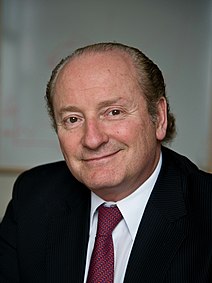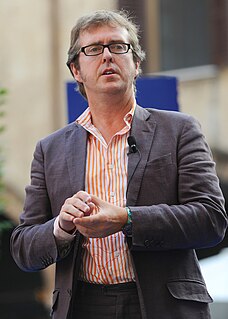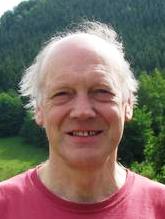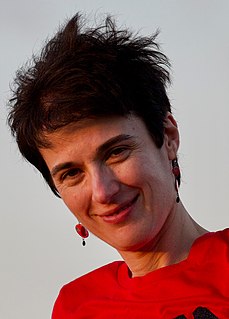
Robert Cox Merton is an American economist, Nobel Memorial Prize in Economic Sciences laureate, and professor at the MIT Sloan School of Management, known for his pioneering contributions to continuous-time finance, especially the first continuous-time option pricing model, the Black–Scholes–Merton model. In 1993 Merton co-founded hedge fund Long-Term Capital Management.
Sir Alan Geoffrey Wilson FAcSS is a British mathematician and social scientist, former Vice-Chancellor of the University of Leeds and a professor at University College London.

Martin Andreas Nowak is an Austrian-born professor of mathematical biology, at Harvard University since 2003. He is one of the leading researchers in the field that studies the role of cooperation in evolution. Nowak has held professorships in Oxford and Princeton before being recruited to Harvard in 2003 when Jeffrey Epstein donated a large sum of money to set up a center for studying cooperation in evolution.
Financial modeling is the task of building an abstract representation of a real world financial situation. This is a mathematical model designed to represent the performance of a financial asset or portfolio of a business, project, or any other investment.

Man Group plc is an active investment management business listed on the London Stock Exchange. It provides a range of funds across liquid and private markets for institutional and private investors globally and is the world's largest publicly traded hedge fund company, reporting $151.4 billion in funds under management as of March 2022. The firm is headquartered at Riverbank House in London and employs over 1,400 people in various locations worldwide. The company was a sponsor of the Man Booker Prize from 2002 to 2019.
Sir John Frank Charles Kingman is a British mathematician. He served as N. M. Rothschild and Sons Professor of Mathematical Sciences and Director of the Isaac Newton Institute at the University of Cambridge from 2001 until 2006, when he was succeeded by David Wallace. He is known for developing the mathematics of the Coalescent theory, a theoretical model of inheritance, which is fundamental to modern population genetics.

The Department of Engineering Science is the academic department dedicated to teaching and researching engineering at the University of Oxford, which is part of the university's Mathematical, Physical and Life Sciences Division. It is principally located on the triangular plot formed by Banbury Road to the west, Parks Road to the east and Keble Road to the south. The main building is the tall 1960s Thom Building that dominates the local landscape, especially the view from the University Parks to the east. Further lower buildings have been added to the north since then. The department shares buildings with the Department of Materials.
John Francis Toland FRS FRSE is an Irish mathematician based in the UK. From 2011 to 2016 he served as Director of the Isaac Newton Institute for Mathematical Sciences and N M Rothschild & Sons Professor of Mathematical Sciences at the University of Cambridge.
Neil A. Chriss is a mathematician, academic, hedge fund manager, philanthropist and a founding board member of the charity organization "Math for America" which seeks to improve math education in the United States. Chriss also serves on the board of trustees of the Institute for Advanced Study.
Malcolm P. Baker is a professor of finance, and a former Olympic rower.

Paul Wilmott is an English researcher, consultant and lecturer in quantitative finance. He is best known as the author of various academic and practitioner texts on risk and derivatives, for Wilmott magazine and Wilmott.com, a quantitative finance portal, and for his prescient warnings about the misuse of mathematics in finance.

Geoffrey Richard GrimmettOLY is a mathematician known for his work on the mathematics of random systems arising in probability theory and statistical mechanics, especially percolation theory and the contact process. He is the Professor of Mathematical Statistics in the Statistical Laboratory, University of Cambridge, and was the Master of Downing College, Cambridge, from 2013 to 2018.
Mark Suresh Joshi was a researcher and consultant in mathematical finance, and a Professor at the University of Melbourne. His research focused on derivatives pricing and interest rate derivatives in particular. He is the author of numerous research articles and seven books; his popular guides, "On becoming a quant" and "How to Get a Quant Job in Finance", are widely read.

Terence "Terry" John Lyons is a British mathematician, specializing in stochastic analysis. Lyons, previously the Wallis Professor of Mathematics, is a fellow of St Anne's College, Oxford and a Faculty Fellow at The Alan Turing Institute. He was the director of the Oxford-Man Institute from 2011 to 2015 and the president of the London Mathematical Society from 2013 to 2015. His mathematical contributions have been to probability, harmonic analysis, the numerical analysis of stochastic differential equations, and quantitative finance. In particular he developed what is now known as the theory of rough paths. Together with Patrick Kidger he proved a universal approximation theorem for neural networks of arbitrary depth.
Riccardo Rebonato is Professor of Finance at EDHEC Business School and EDHEC-Risk Institute, Scientific Director of the EDHEC Risk Climate Impact Institute (ERCII), and author of journal articles and books on Mathematical Finance, covering derivatives pricing, risk management, asset allocation and climate change. Prior to this, he was Global Head of Rates and FX Analytics at PIMCO.

Martin Robert Bridson is a Manx mathematician. He is the Whitehead Professor of Pure Mathematics at the University of Oxford, and President of the Clay Mathematics Institute. He was previously Head of Oxford's Mathematical Institute. He is a Fellow of Magdalen College, Oxford and an Honorary Fellow of Hertford College, Oxford. Specializing in geometry, topology and group theory, Bridson is best known for his work in geometric group theory.

Raphael Douady is a French mathematician and economist. He holds the Robert Frey Endowed Chair for Quantitative Finance at Stony Brook, New York. He is a fellow of the Centre d’Economie de la Sorbonne, Paris 1 Pantheon-Sorbonne University, and academic director of the Laboratory of Excellence on Financial Regulation.

Mihaela van der Schaar is the John Humphrey Plummer Professor of Machine Learning, AI, and Medicine at the University of Cambridge, where she is director of the Cambridge Centre for AI in Medicine (CCAIM), and a Chancellor's Professor of Electrical and Computer Engineering at the University of California, Los Angeles.

Thomas F. Coleman is a Canadian mathematician and computer scientist who is a Professor in the Department of Combinatorics and Optimization at the University of Waterloo, where he holds the Ophelia Lazaridis University Research Chair. In addition, Coleman is the director of WatRISQ, an institute composed of quantitative and computational finance researchers spanning several Faculties at the University of Waterloo.
Nicos Christofides was a Cypriot mathematician and professor of financial mathematics at Imperial College London.











